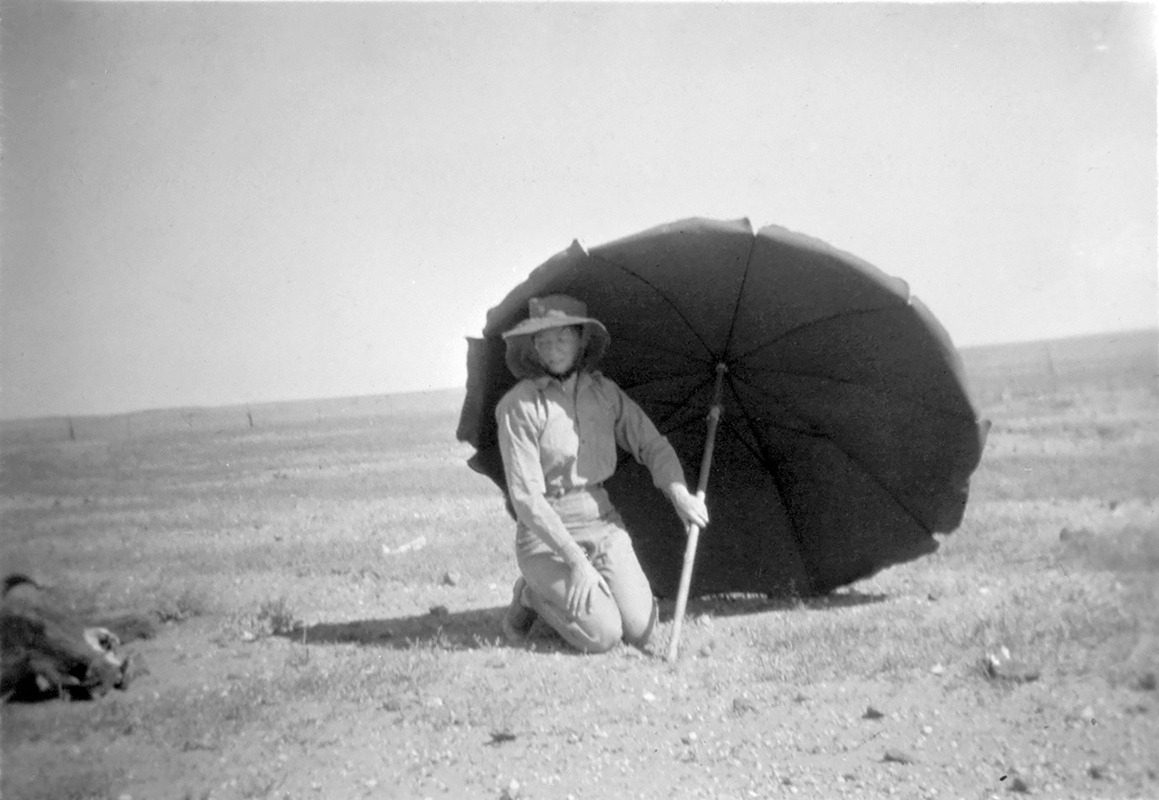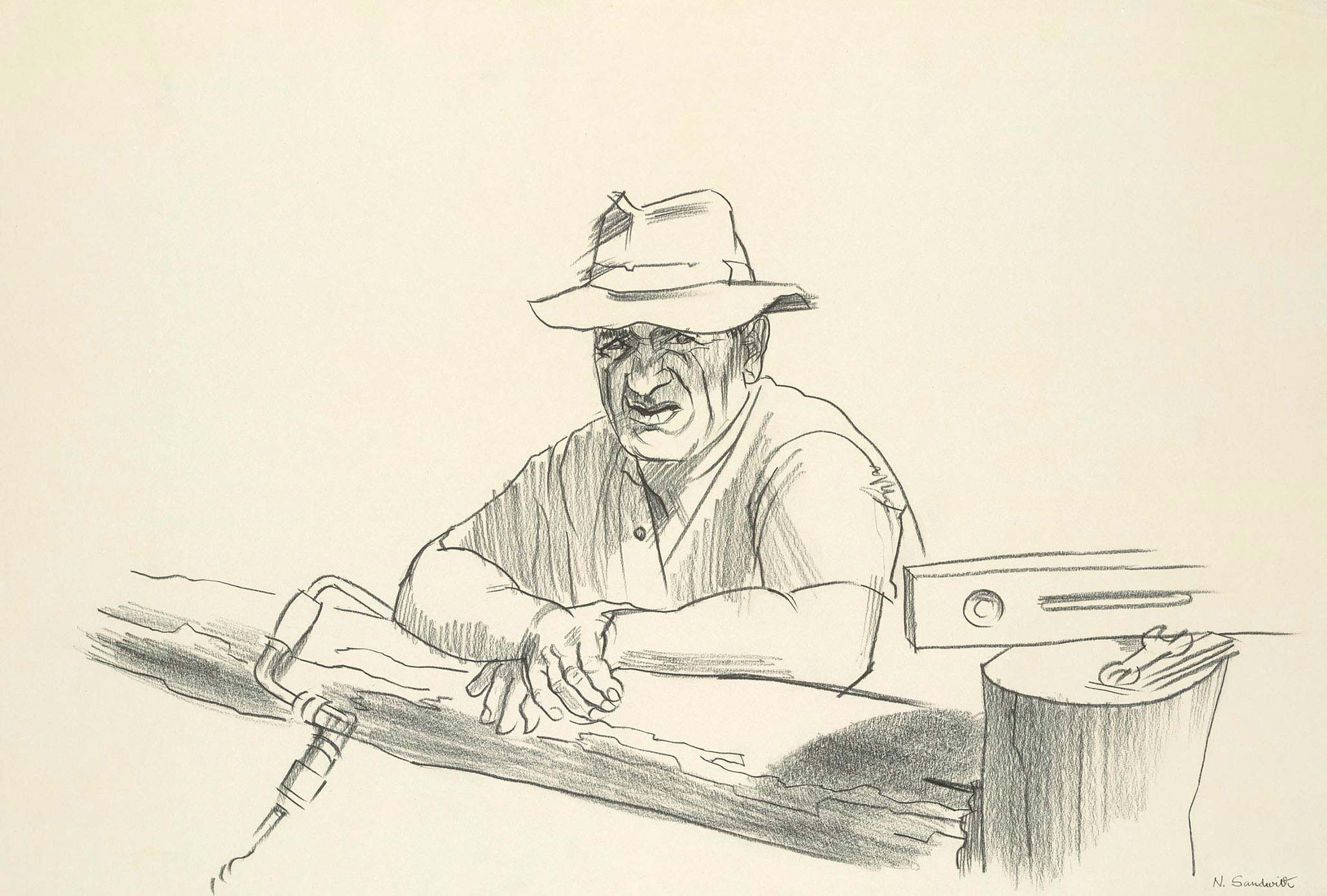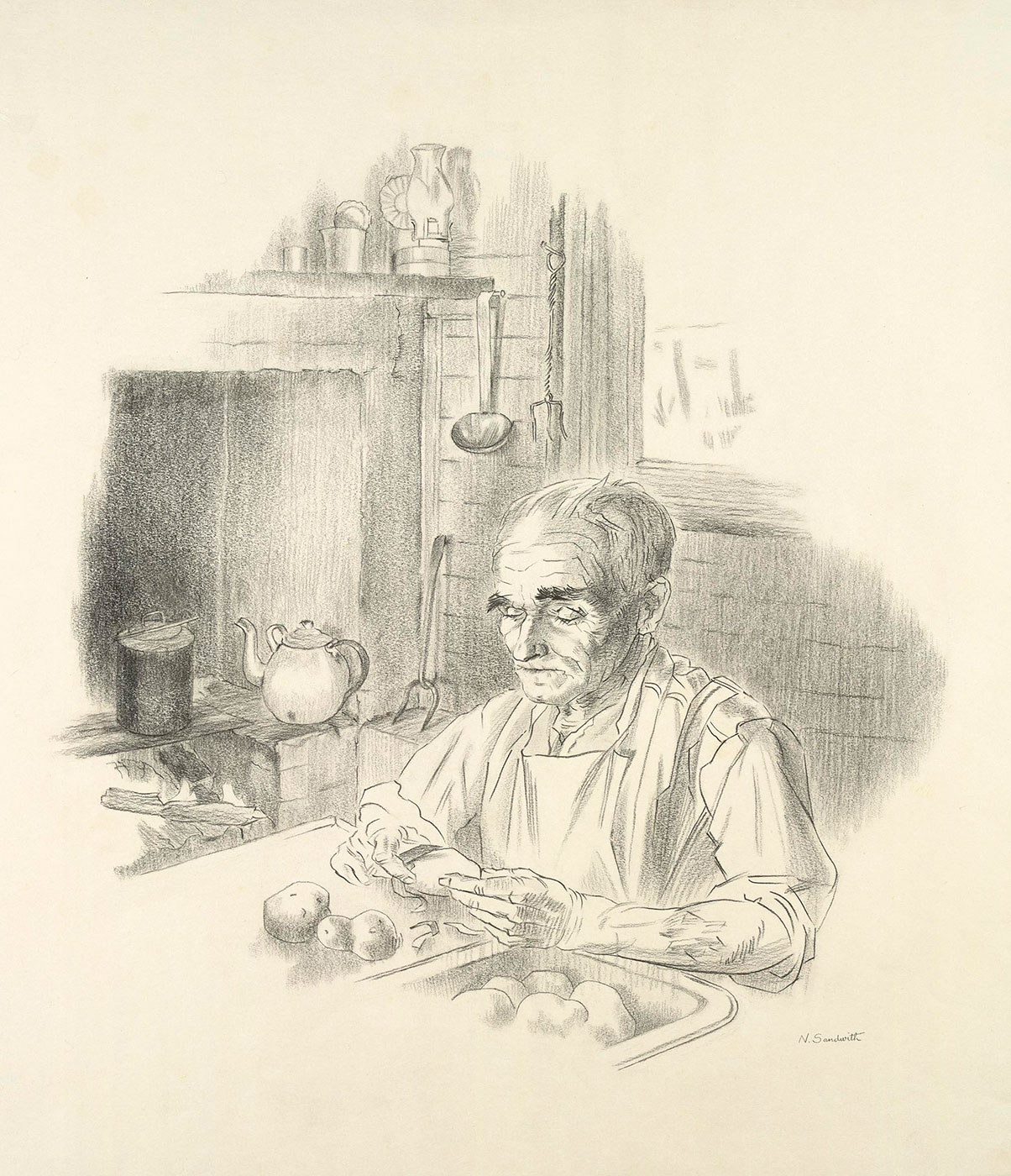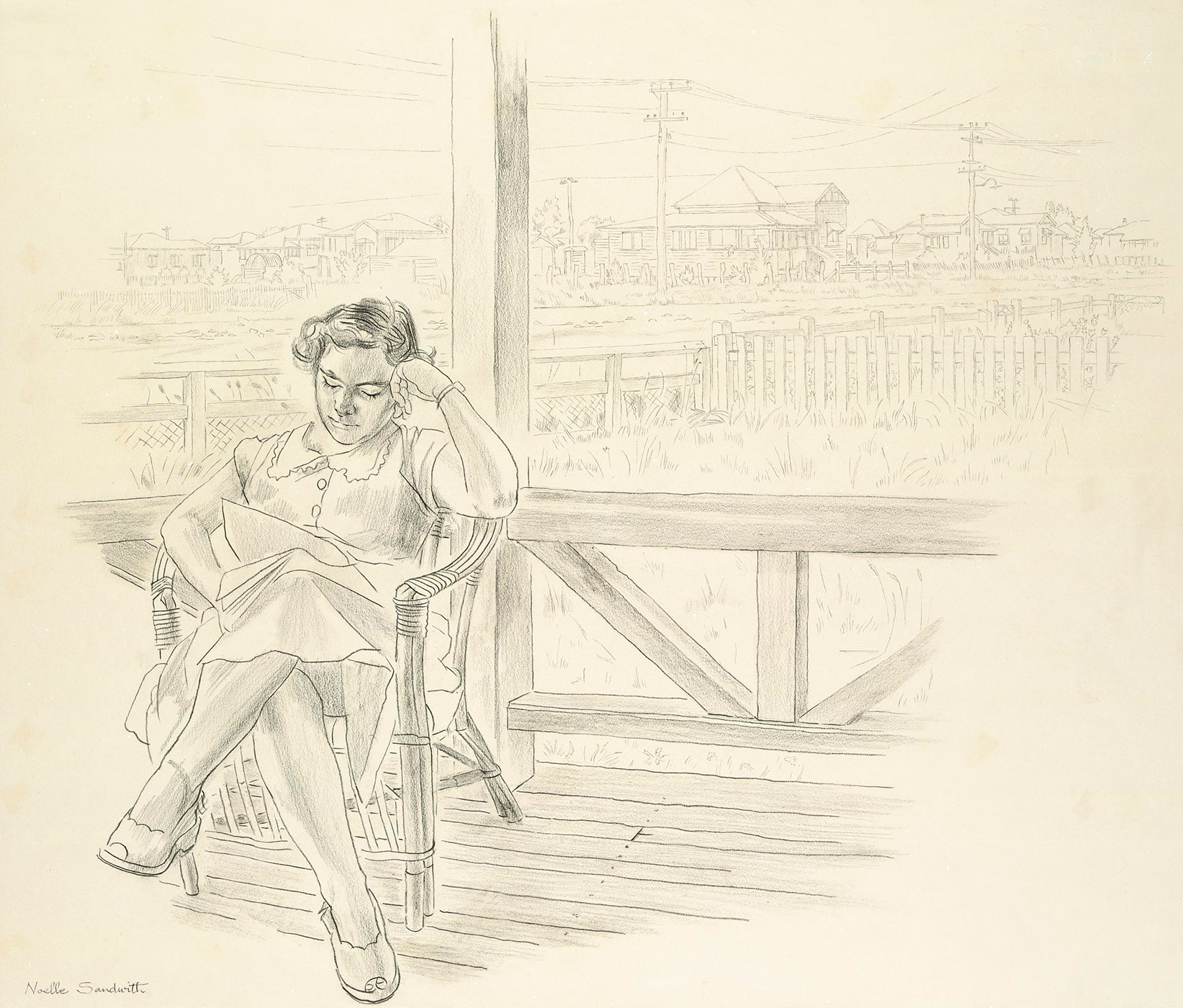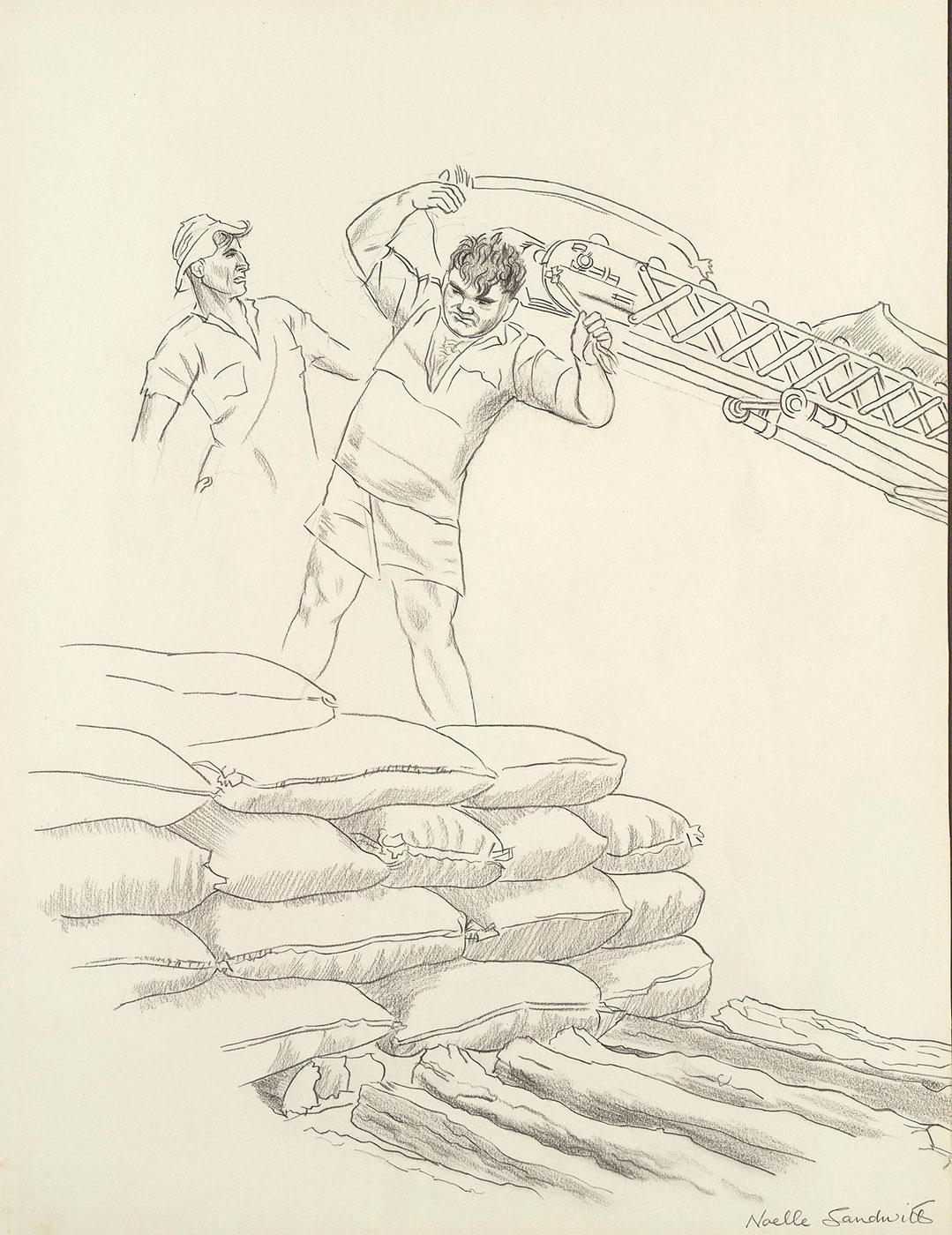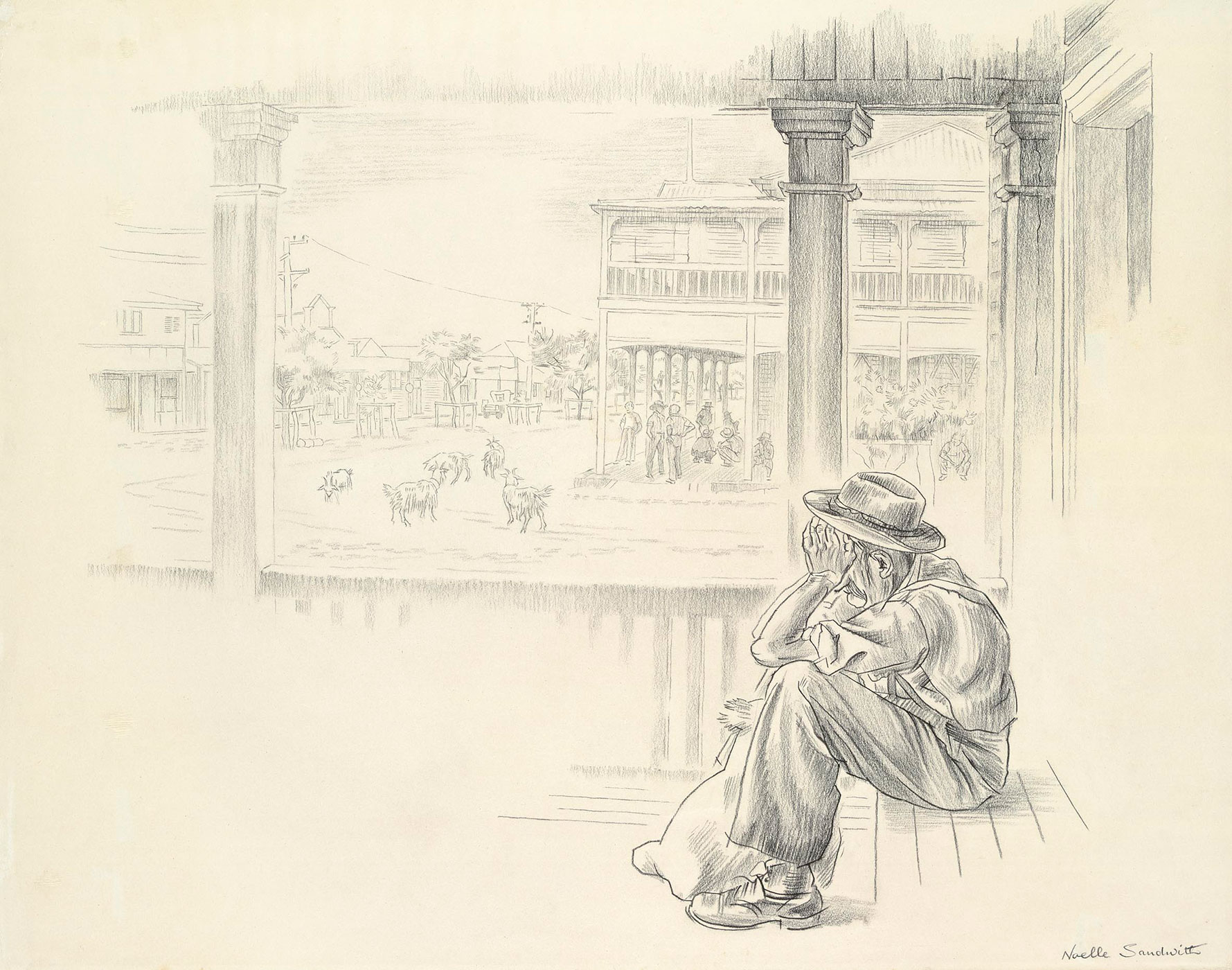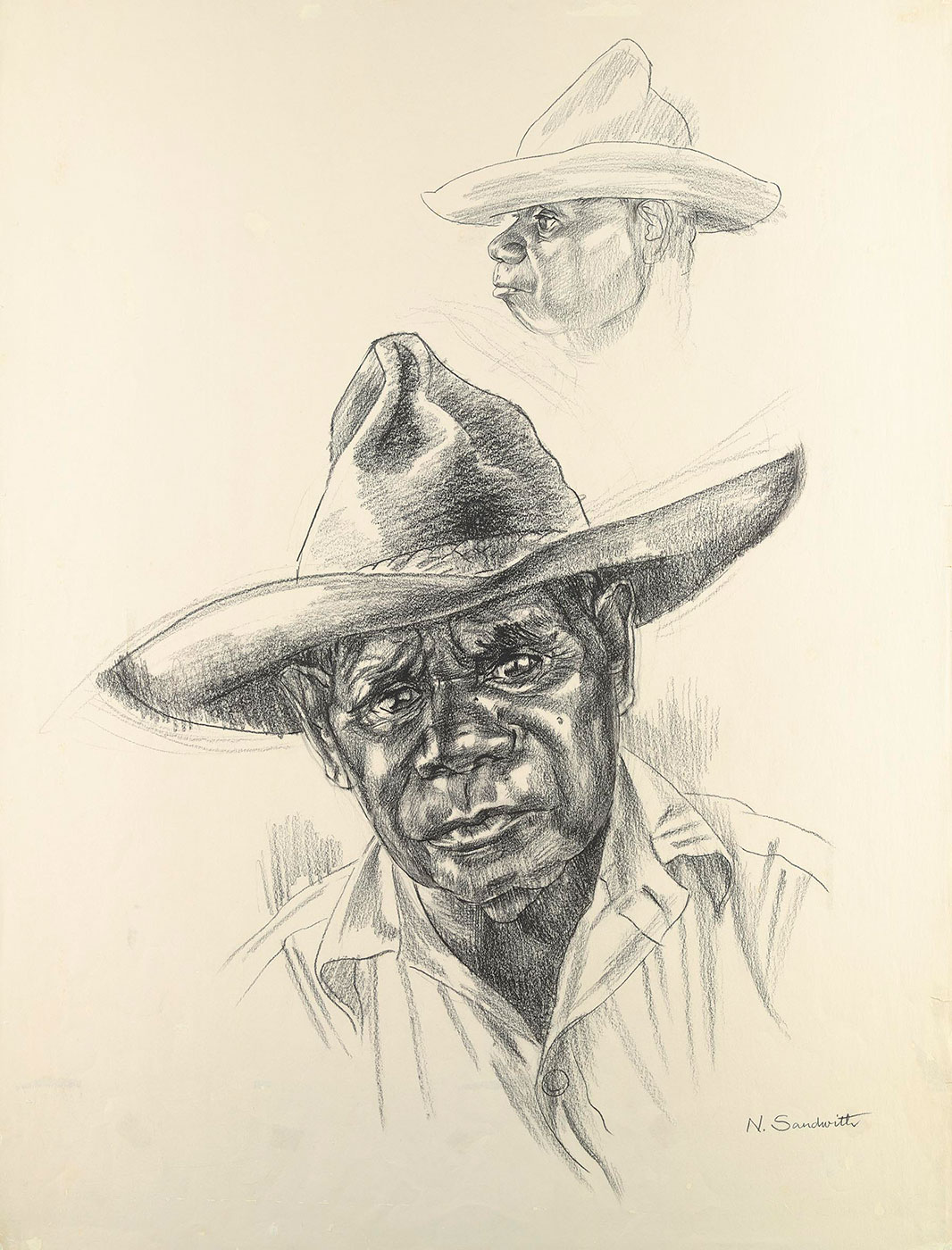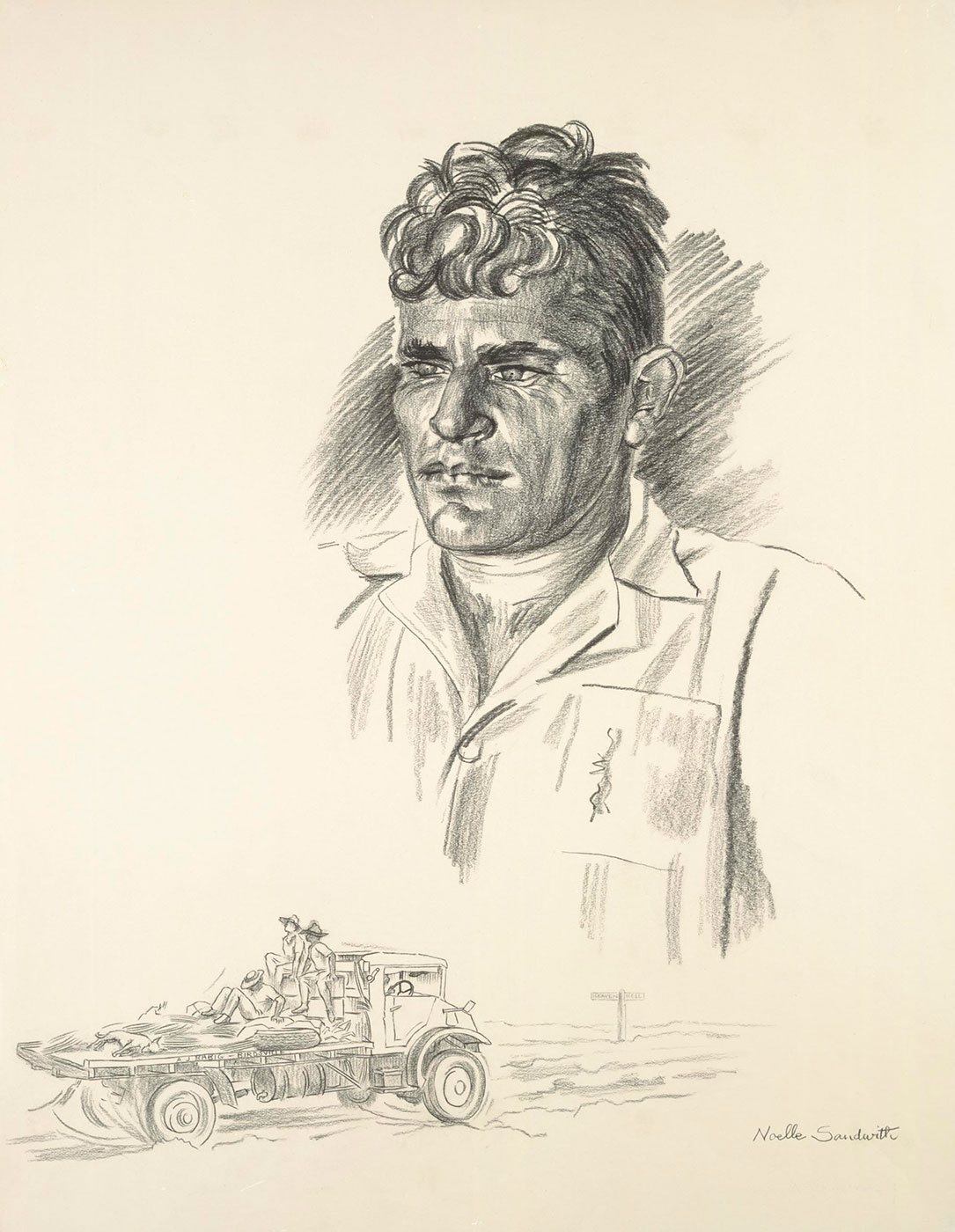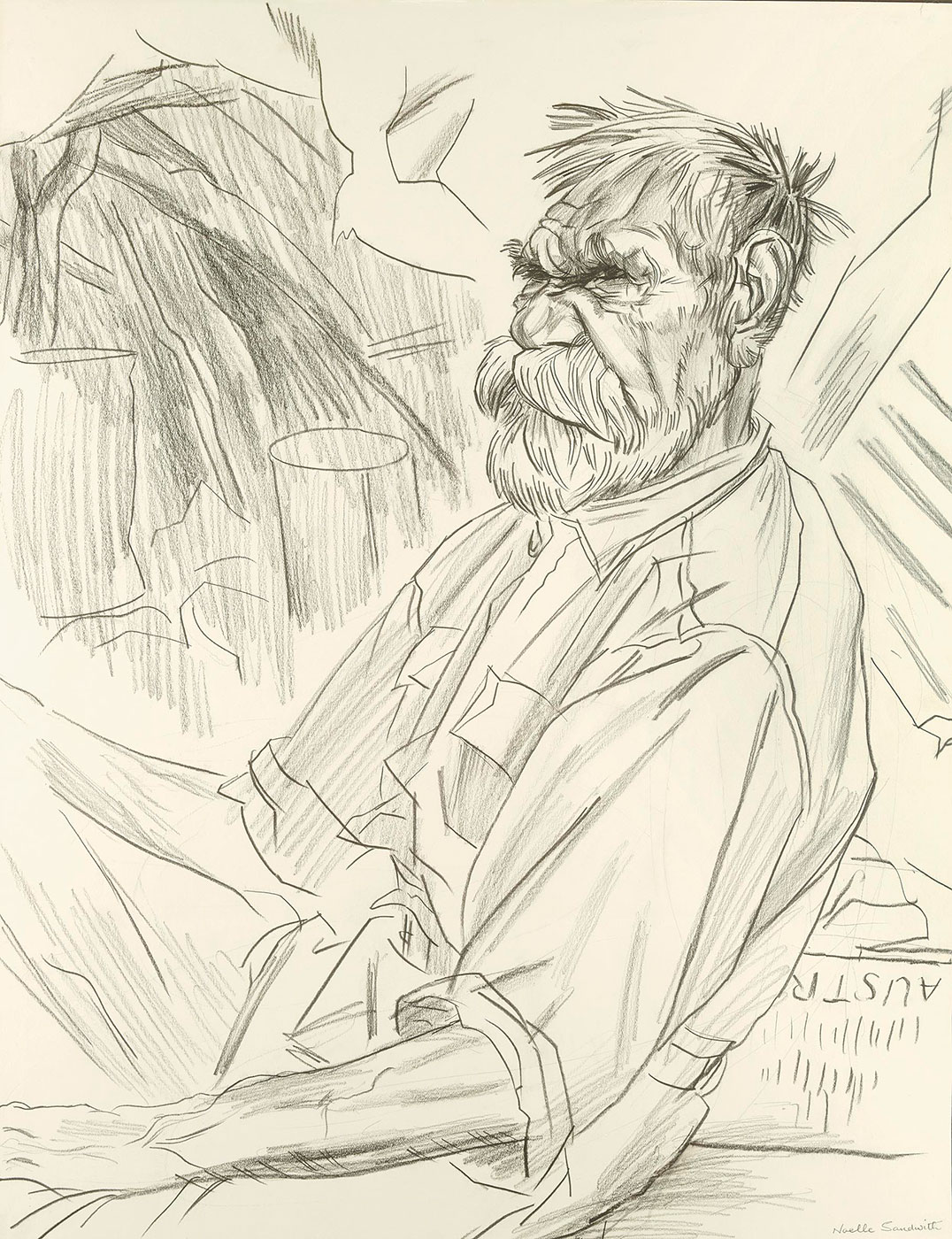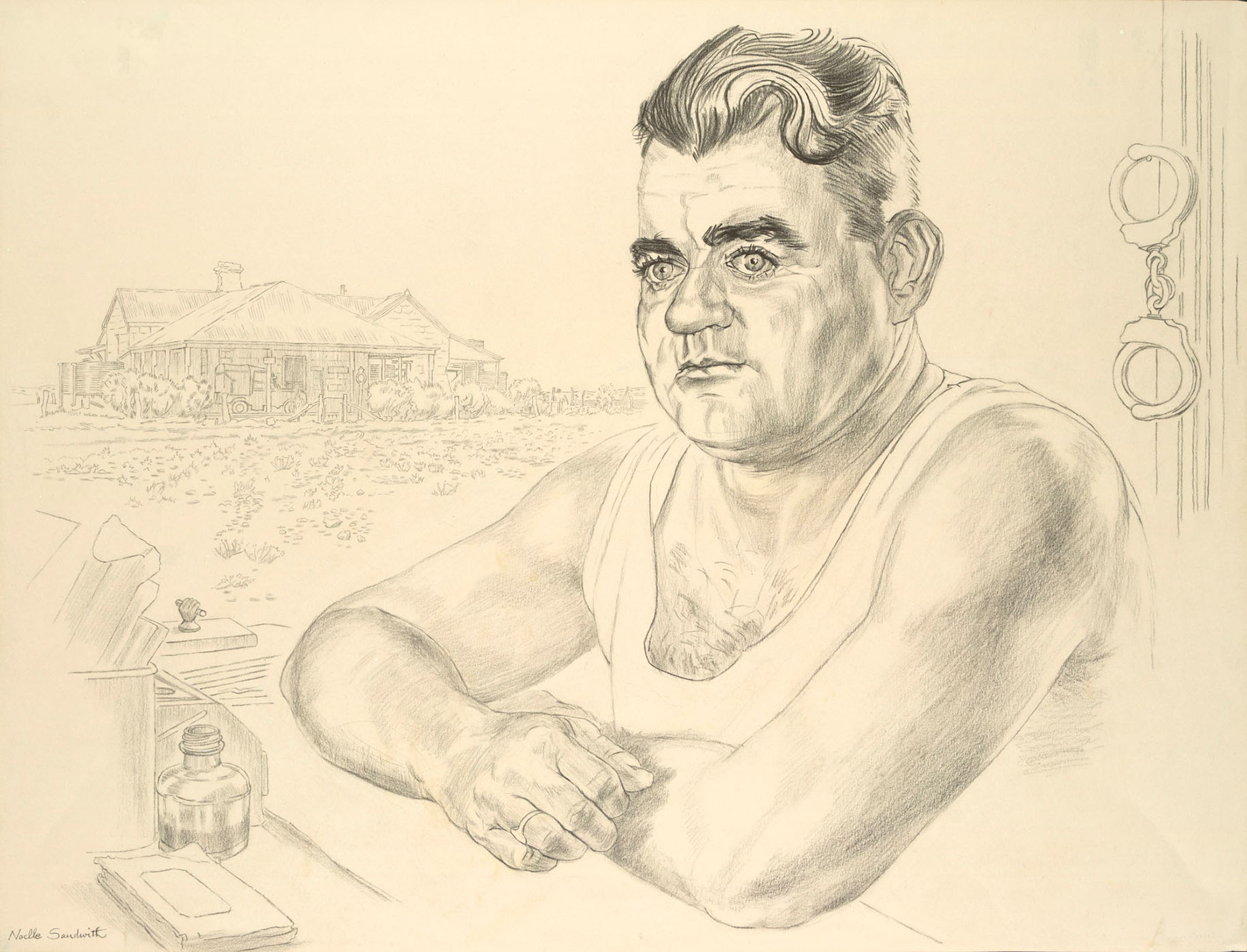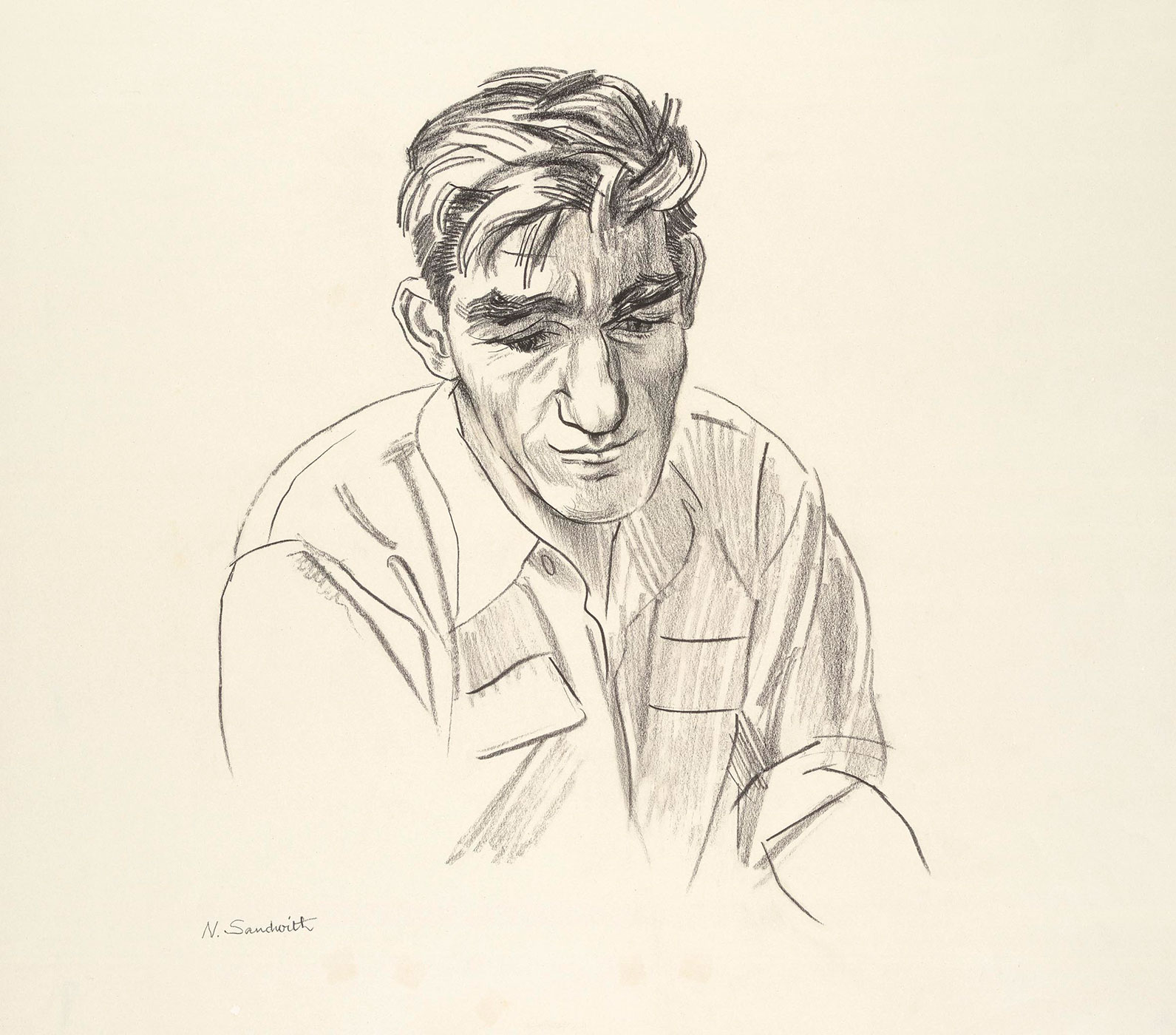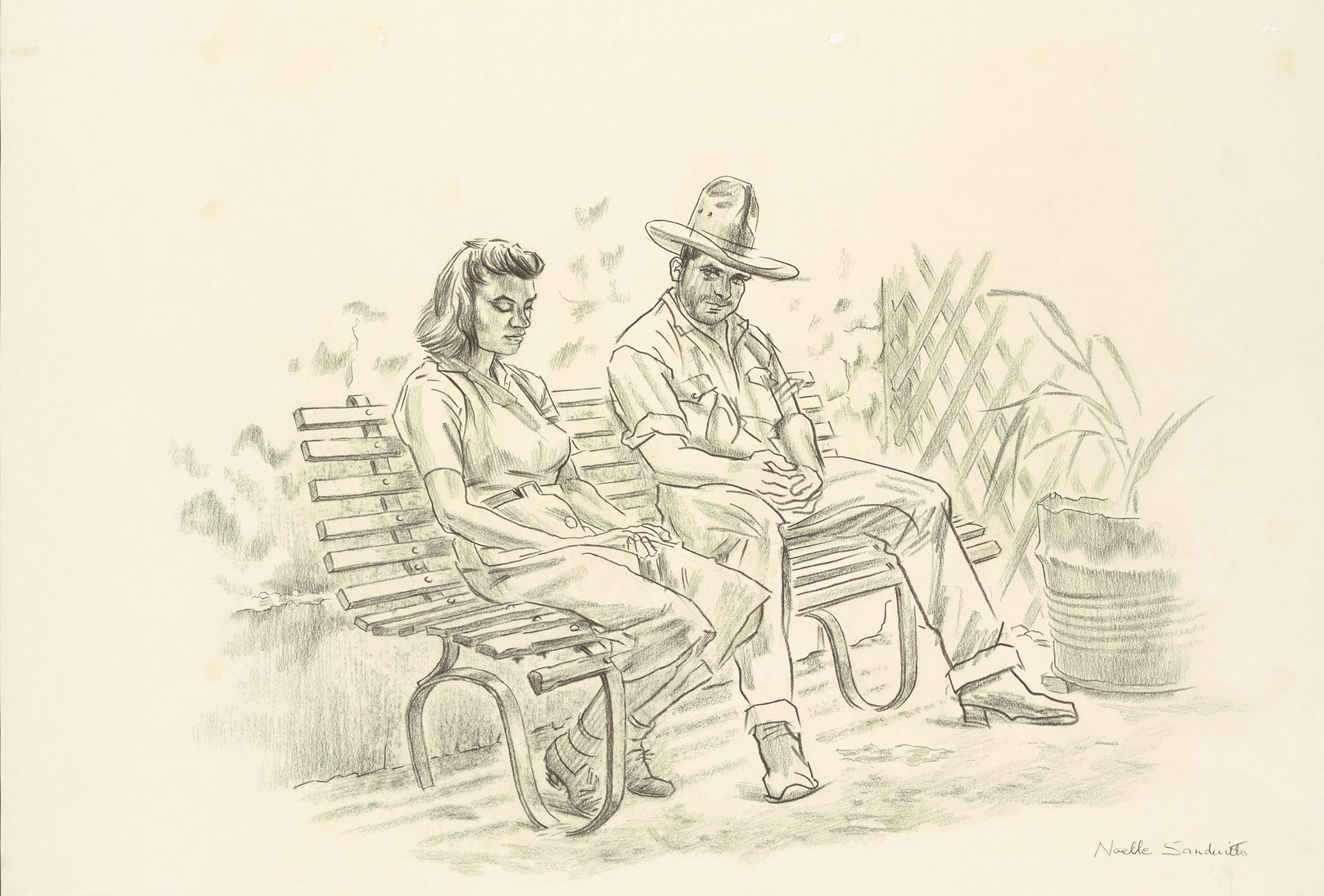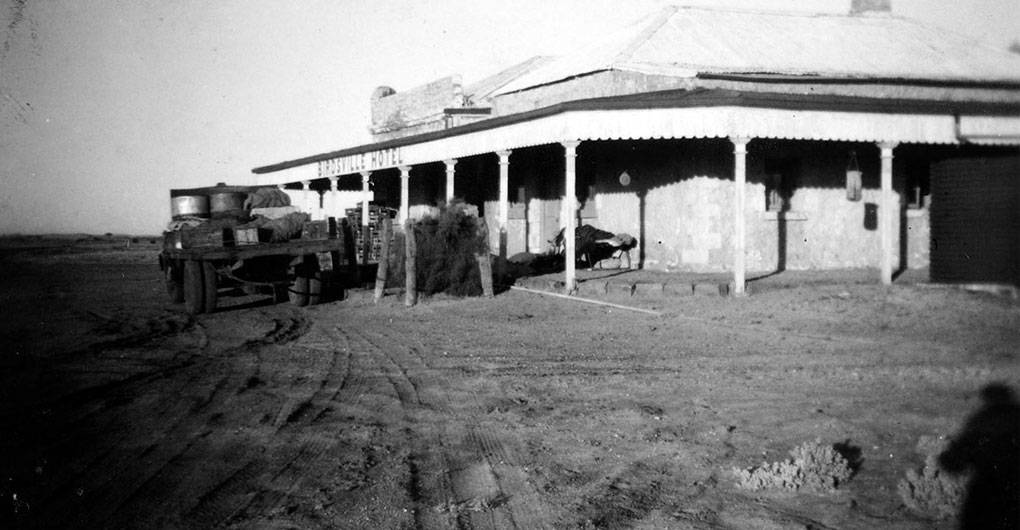In Search of the Birdsville Track: An Artist in the Outback featured works from the Museum’s collection donated by English artist Noelle Sandwith who travelled the Birdsville Track in 1953. Through Noelle’s sketches and writings, the exhibition captured the unique environment, characters and lifestyles of this quintessentially Australian experience.
In Search of the Birdsville Track was previously on show at the National Museum of Australia from 23 June to 9 October 2005.
Noelle Sandwith, 1953:
Only one man and a dog! Go to Birdsville, then down the Birdsville Track, if you want something out of the ordinary!′ His words kept recurring to me – an invitation to loneliness, utter loneliness ...
Birdsville journey
In the summer of 1952–53 Noelle Sandwith, undertook one of Australia’s best-known journeys along the Birdsville Track, from Birdsville to Marree. Noelle sketched, photographed and wrote about those she met and the scenes she encountered.
After setting out from Sydney, Noelle Sandwith trained, trucked, bussed and hitched rides with various travellers. As she headed towards Birdsville she sketched life in towns such as Muswellbrook, Moree, Goondiwindi, Toowoomba, Dalby, Charleville, Quilpie, Windorah and Betoota. Keen to document working life, Sandwith also visited a number of stations along her route.
Sandwith arrived in Marree in February 1953, having completed 105 sketches documenting the people and places she had encountered throughout her journey. Upon her return to England, Sandwith wrote up the extensive notes she took during her adventure. Extracts of this account accompany her sketches.
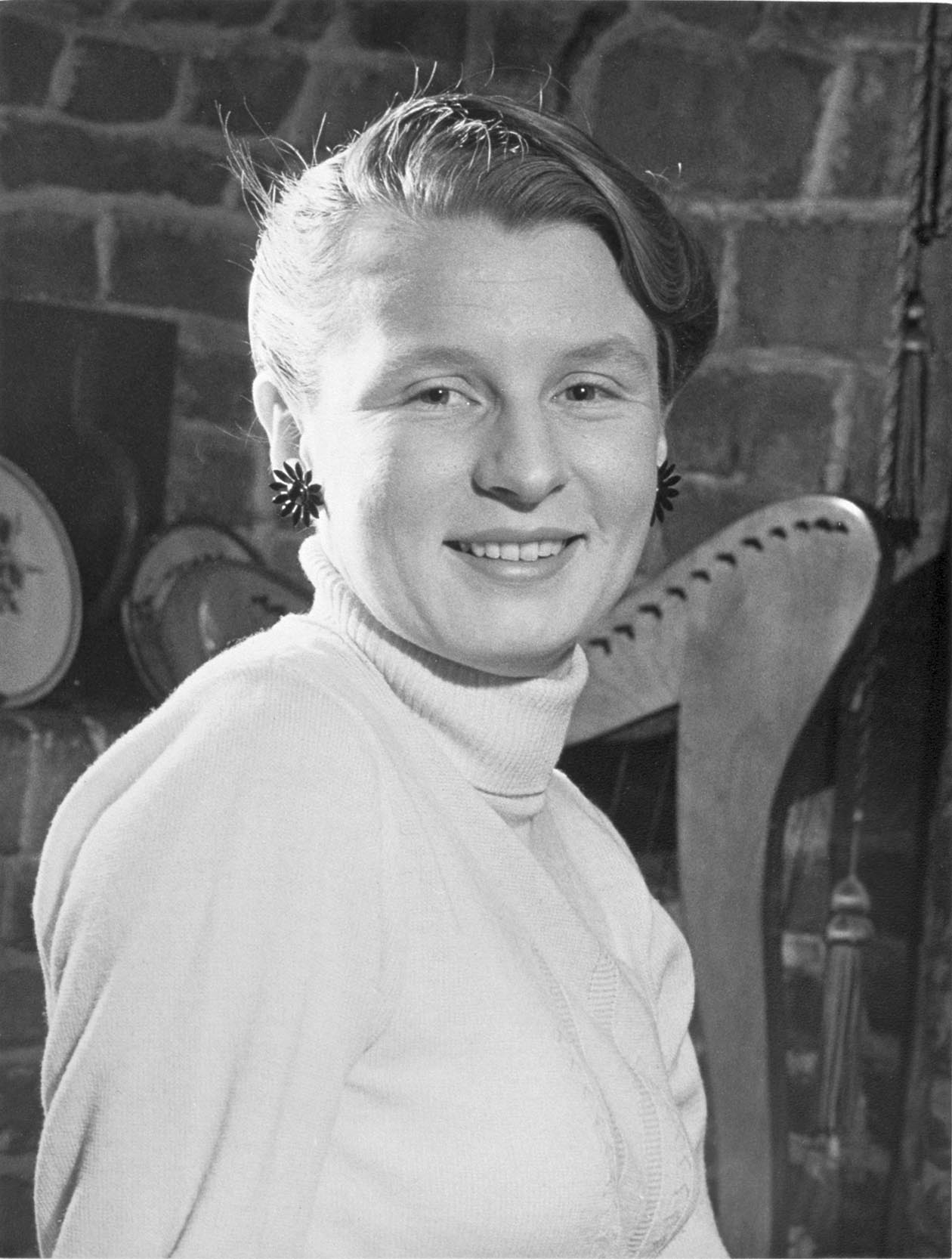
Biography
Noelle Sandwith was born in 1927, the only child of English parents Francis and Frieda, both accomplished authors and photojournalists.
Sandwith studied at various art schools in England during the 1940s. In October 1950 she ventured to Australia at the invitation of her uncle who was working in Sydney. Sandwith found freelance art work until, despite family pressure to return to England, she embarked on her journey down the Birdsville Track.
After her return to England in 1955 Sandwith became a state registered nurse but continued practising as an artist.
As well as her Australian sketches, Sandwith completed works in Tonga, British Columbia, Fiji and Samoa.
In our collection
The Noelle Sandwith collection no. 1 consists of 101 sketches drawn in 1952–53 by Noelle Sandwith and examine a wide variety of groups and people within the Australian community.
The Noelle Sandwith collection no. 2 consists of a black vinyl photograph album containing 18 photographs and 109 negatives of scenes and people around Birdsville, Windorah and Quilpie.
The Birdsville Track
The Birdsville Track developed as a droving route for stock travelling between Queensland’s Channel Country and South Australian markets. Between 1890 and 1960 as many as 50,000 cattle were moved down this rough stock route.
Initially, drovers relied on good seasons to supply sufficient natural water sources along the route for the cattle. However, without adequate rains the track could become impassable.
Between the late 1890s and the 1920s the South Australian Government sank bores at intervals of around 50 kilometres along the track, formalising the route and ensuring a regular supply of water for stock.
The proliferation of motor transport after the Second World War changed the track forever. Transporting cattle by truck and, later, by large road trains, meant that by the 1960s droving along the Birdsville Track went into decline.
Birdsville, the town that gave the track its name, is now a small town servicing the remaining large properties and an ever-growing number of tourists.
In our collection
You may also like
